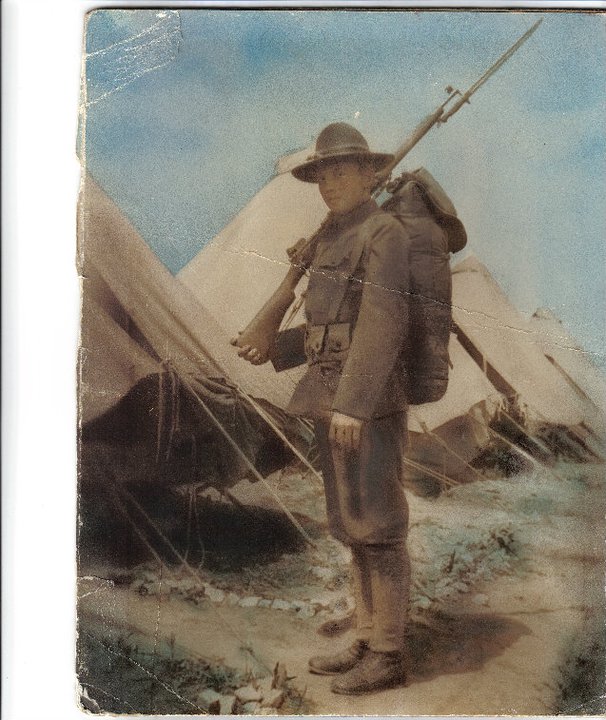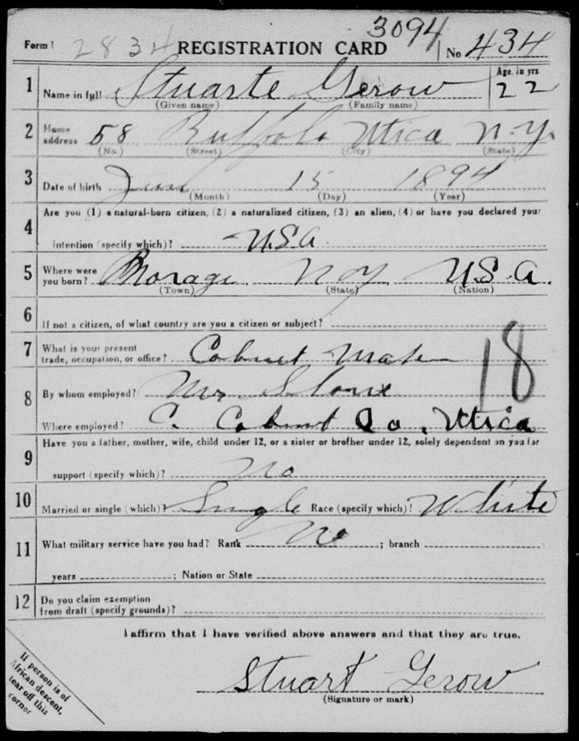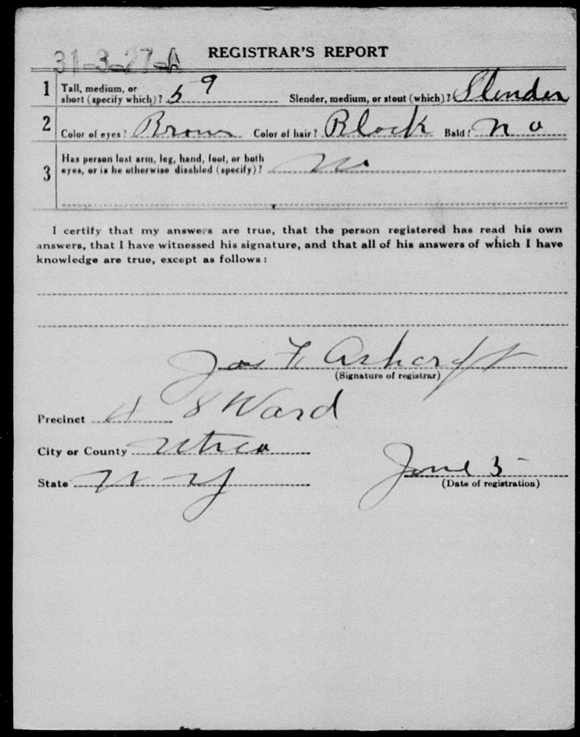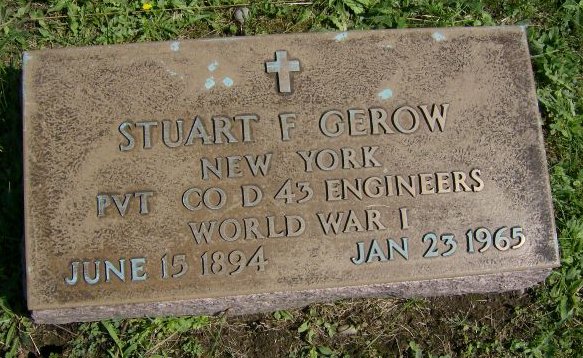


14th Battalion, 20th Engineers
The 43rd Engineers
Note: Most of the text of this article comes from "TWENTIETH ENGINEERS -- FRANCE -- 1917-1918-1919"
The last of the three Road and Bridge Battalions, and of the Forestry troops which served overseas, was the 43rd Regiment of Engineers, organized at Washington, D. C., in February, 1918. As formed, the outfit consisted of Headquarters Detachment and Companies A, B, C, and D. The greater part of the strength was drawn from recruiting centers and cantonments, largely from the middle west, but a considerable number of men were received from Walter Reed General Hospital--men who had been left behind by earlier Forestry contingents. The percent of convalescents making up Co. A was so large as to earn for that unit the sobriquet, "The Walter Reed Brigade." Camp Dodge was the heaviest contributor to the total strength of the Battalion, which was achieved early in April.

Company B, 43rd Engineer Battalion (later 47th Company, 14th Battalion, 20th Engineer Regiment) at Camp American University before departure for France
Drill, fatigue, and equipping proceeded apace, and the unit was reported ready for overseas duty by the middle of May. In spite of the tremendous numbers of combat troops waiting for transportation, the demand for Forestry reinforcements brought quick action, and the 43rd started for Hoboken May 21st. They boarded the huge U.S.S. ''Leviathan'' the next day, and sailed the 23rd. The voyage was uneventful until noon of the 30th, when a nest of submarines attacked the transport. Troops were ordered to quarters, while the gunners gave battle to the enemy. A total of twenty nine shots were fired and, as the official report laconically described the incident, two subs were sunk and two captured.
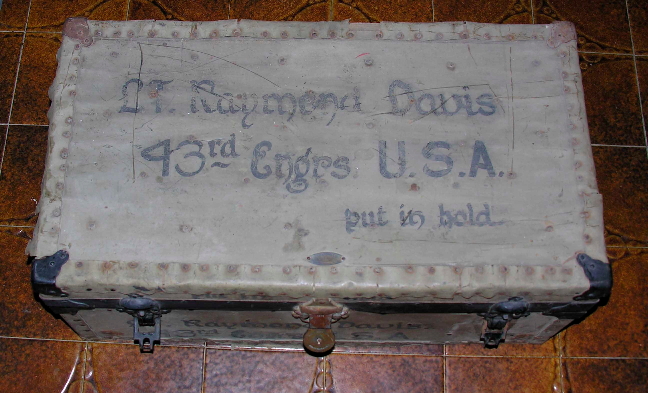
Steamer truck belonging to Lt. Raymond Davis, 43rd Engineer Regiment
The shores of Brittany hove into sight the same afternoon and the outfit landed the next day. Following the thousands of their comrades, they plodded up the cobbled streets of Brest to the air of the ''National Emblem March" played by the volunteer Band. While undergoing the customary rest, the companies were employed in camp improvements, sorely needed, as the survivors attest.
Detailed plans for the employment of the 43rd to the Forestry section were received shortly. June 7th the Headquarters Detachment, and Companies A and B, entrained, in luxurious third class coaches, and started east. Three days later the expedition reached the city of Neufchateau, Vosges.
On account of the proximity of the enemy lines the train was held here until twilight. During the wait occurred what is still remembered by the veterans as the first real thrill of overseas service. It happened thus: The Band undertook to liven the wait with an impromptu concert. Among its audience was the French colonel in local command, who was so enthused by the martial airs and general display of allied fraternity that he offered to buy for the bunch. Courtesy and inclination combined to force an eager acceptance, but just as the corks were popping a conscientious lieutenant took a hand, placed the band men under arrest and ordered them back to the cars The genial French commandant was much chagrined, and was only mollified by a round of apoligies
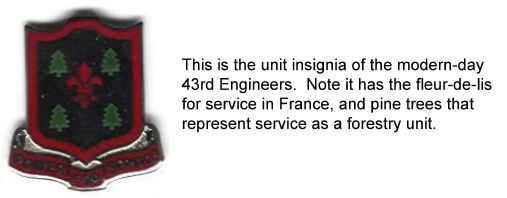
Proceeding under cover of darkness to Dijon, the contingent there broke up, and was never again united. Digressing, it is well to mention that, as finally reorganized in October, 1918, the 43rd Engineers became the Fourteenth Battalion of the Twentieth Forestry. Companies A, B. C, and D were styled the 46th, 47th, 48th and 49th Companies of the Twentieth.
Co. A (later the 46th Company) moved north from Dijon, arriving at Chatenois home station of the 15th Co., June 16th. Here the outfit was split into several detachments. One faction accompanied the First Army duty in the Argonne. The others were utilized as reinforcements to the many camps of the Twentieth assisting the 4th, 6th, 25th and 43rd Companies. Routine duties, all heavy and all vitally necessary, filled the autumn and winter.
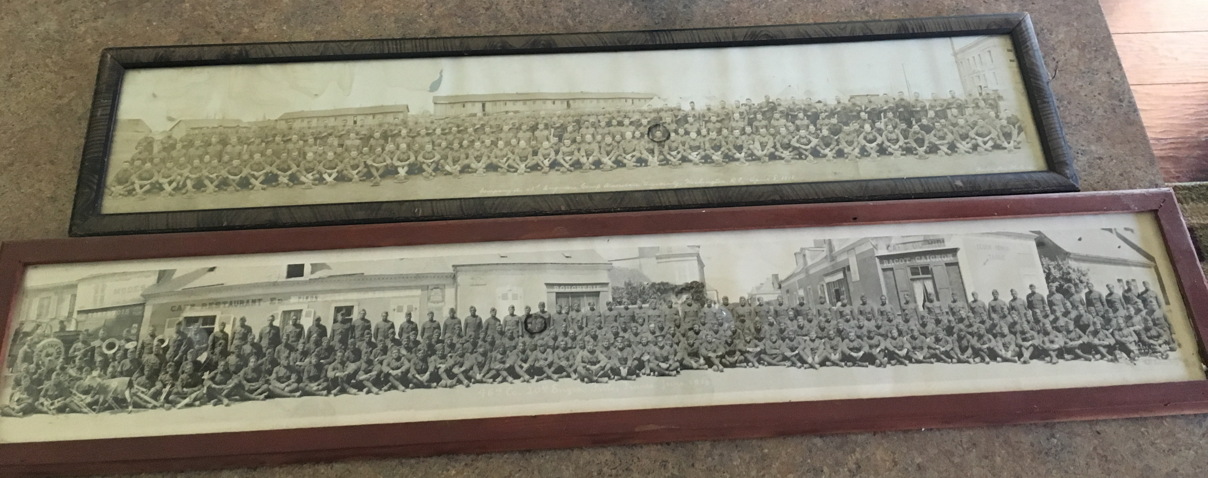
Photos of Company A, 43rd Engineers at Camp American University
and its later incarnation as the 46th Company, 20th Engineers at Fille, France
Note the company band and goat mascot at the far left of the photo in France
Courtesy of Harlan Schwartz, Medford, Wisconsin
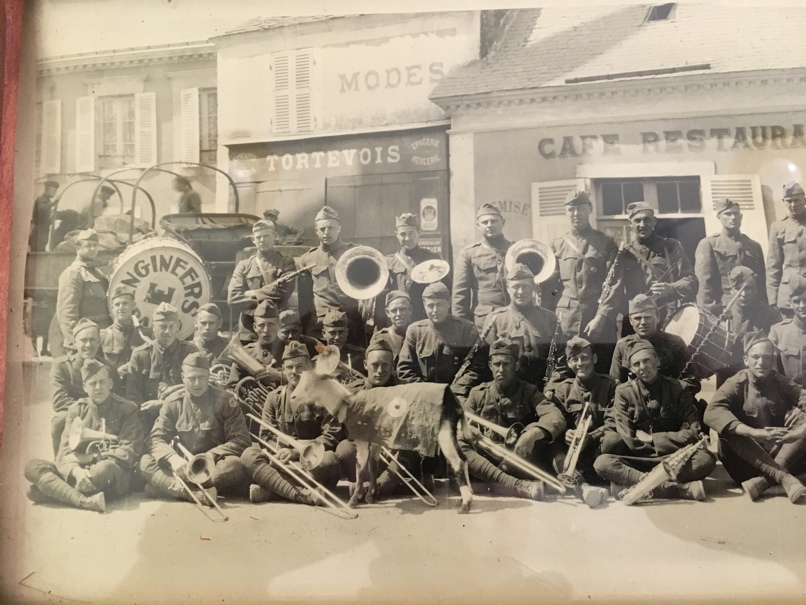
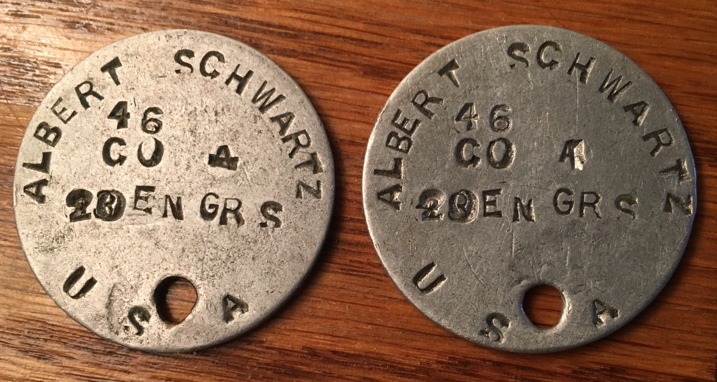
Dogtags belonging to Albert Schwartz
Note that the tags were originally stamped "CO A, 43 ENGRS"
then later overstamped with "46 CO, 20 ENGRS"
Courtesy of grandson Harlan Schwartz, Medford, Wisconsin
In January, 1919, the scattered forces were assigned to salvage the camps vacated by companies moving to the Burnt Area in the Landes. After cleaning up the Granges and Brouvelieures operations, the 46th moved to Eclaron, and made the final steps incidental to turning the establishment over to the French. Late in May, the company started for home, and after after stops at Neufchateau, LeMans and Burges, they pushed on to the coast, and sailed June 24th on the battleship "Rhode Island." Following southern lines, they landed at Newport News and were finally dispersed at Camp Stewart.
Co. B., the 47th Company, arrived at St. Julien, Cote d' Or, June 10th, 1918 and quickly got rid of the notion that Roads and Bridges were to be their meat. Co. E of the Tenth Engrs were conducting lumbering operations on an extensive scale, and the 47th were added to the woods force. For the duration of fighting, and seven months after, the outfit labored at St. Julien, leaving only for the home trip.,
June 7th, a year to the day after striking into the interior, the company entrained for embarkation camp. A stay of ten days at LeMans and five at St. Nazaire, and the outfit was on its way to the states aboard the transport "Mercury. They landed at Newport News the 5th of July, and struck the radial trails for home three days later.
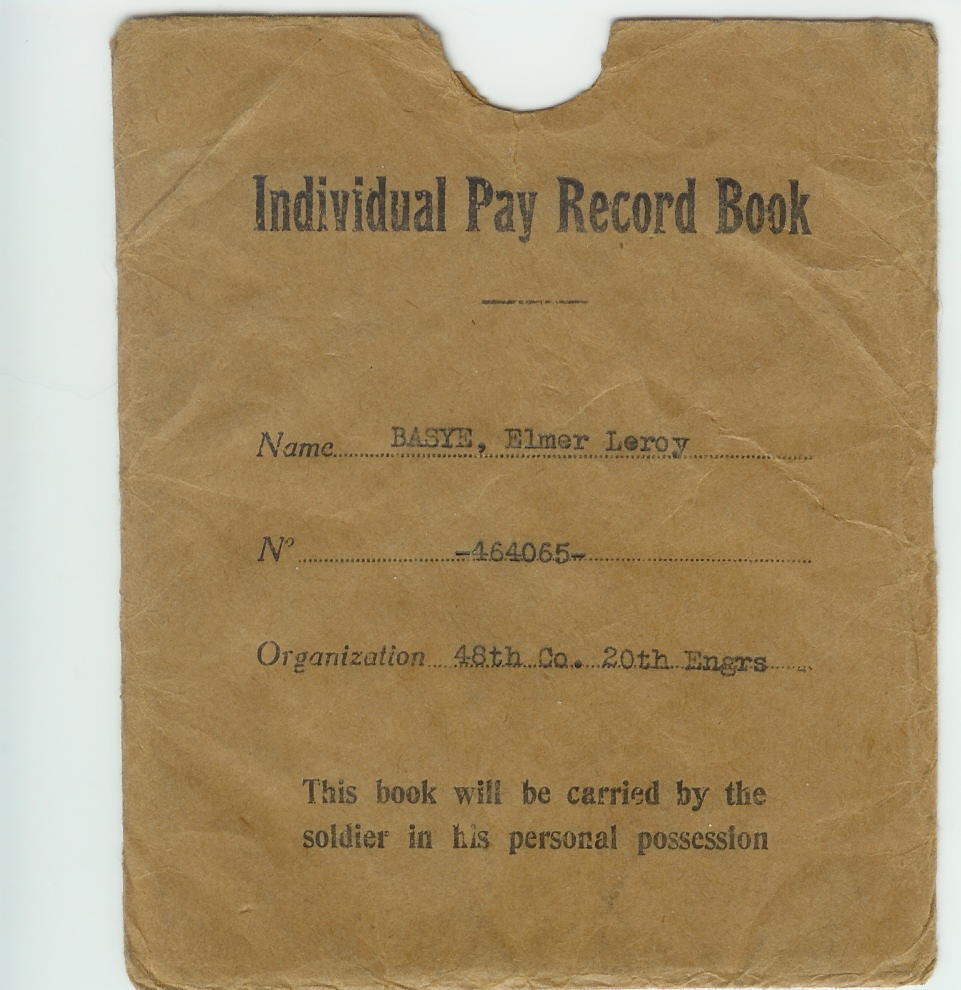
As were the 46th and 47th, so was the 48th detailed for duty as service reinforcements. During the summer and fall of 1918 the members served with the 14th Co., Fifth Battalion, in the vally of the Yonne, southeast of Paris. The bulk of their work was at Subligney-Villeroy, in oak timber. A detachment of the 48th assisted in logging piling, and hewing ties, at Mauny.
Late in the fall the Company was detached from duty with the Fifth, and sent to Labrit District, south of Bordeaux, for duty with the Sixth Battalion, which had recently been released from service for the British Army at Castets, further south. The 16th and 17th Companies built and operated a large mill at Captieux, near Labrit, and the 48th was employed in this camp until the windup of operations in May.
and later 49th Company, 20th Engineers, and are courtesy of his grandson, Stuart Gerow.
